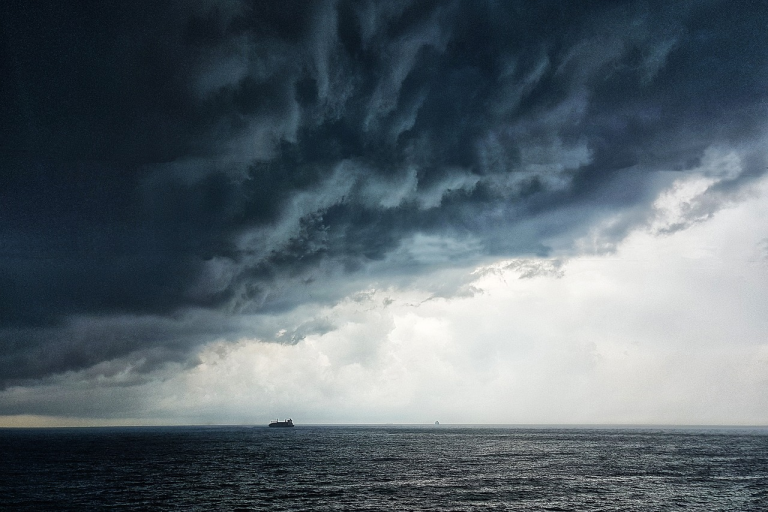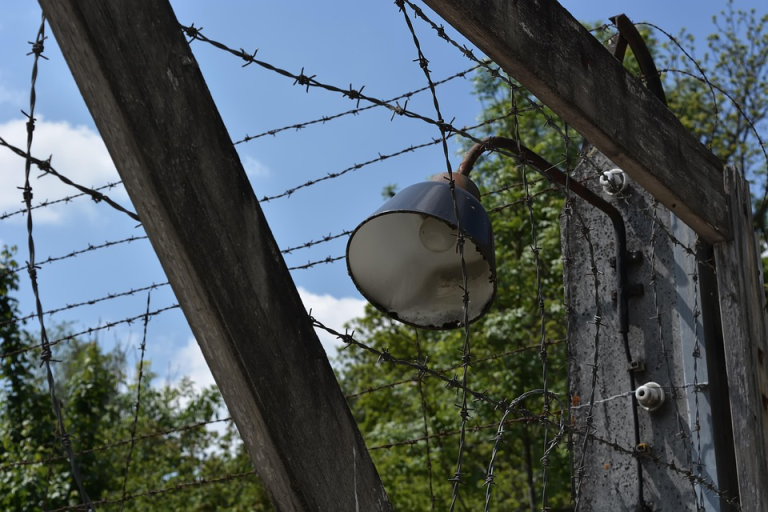The Wedding We Anticipate

“Then I saw a new heaven and a new earth, for the first heaven and the first earth had passed away, and the sea was no more. And I saw the holy city, new Jerusalem, coming down out of heaven from God, prepared as a bride adorned for her husband.” (Rev. 21:1–2)
If exile means being separated from, displaced from, or cut off from the place or people we cherish most, then the end of exile must, among other things, involve reunion. It’s about bringing back together what was kept apart during the time of exile.
The story in the Bible begins with union in Genesis and concludes with reunion in Revelation. Initially, we were together with God in the garden, but due to our sin, we were exiled (Gen. 3:23–24). We were cut off from God’s presence until Christ’s sacrifice on the cross reconciled us. This pivotal moment set the stage for the exiled to return to God’s presence, to the paradise of his embrace, through the power of Christ’s blood. In this glorious reunion, it will be announced from the throne, “Behold, the dwelling place of God is with man” (Rev. 21:3).
In John’s Apocalypse, the end of exile is filled with vivid imagery. There are epic battles (20:7–10), God’s victory over “that ancient serpent” Satan (v. 2), judgment before a “great white throne” (vv. 11–13), and the fall of Babylon (18:1–24). The defeat of Babylon is especially significant for the exiled church. Babylon symbolizes all the cities in the world (in John’s time, particularly Rome) that oppose God and are “drunk with the blood of the saints” (17:6). Her downfall means the end of her oppression of God’s people.
This great victory over Satan and Babylon leads to the magnificent reunion described in Revelation chapters 21–22. Here, I want to explore two interconnected images of “reunion” in the description of the new heavens and new earth: (1) the marriage supper of the Lamb and (2) the “garden – city” portrayal of the new creation.
The Bible’s narrative goes from the unity in the beginning in Genesis to the reunion at the end in Revelation. In the image of the marriage, God’s beloved Bride (the church) finally unites with the Bridegroom in wedded happiness. In the garden – city image, we catch a glimpse of the city, which since Genesis 3 has been a flawed attempt by fallen humanity to create its own paradise. Now, it reaches its perfected state in God’s presence, being reunited with the long – lost paradise.
The Longings of Every Exile
John, the author of Revelation, was literally in exile. He wrote from the island of Patmos in the Aegean Sea, where he was exiled because of Roman persecution of Christians (likely under Emperor Domitian). No doubt feeling the pain of separation from his fellow Christians across the sea, John wrote to encourage his fellow exiles, specifically the seven historical churches in Asia Minor.
The threats of pagan polytheism and Roman persecution made some of these young churches waver. But John urged them to persevere. To the persecuted, tired, and impatient exiles of his time, as well as those in generations to come, John’s Apocalypse conveys an inspiring and hopeful message: God will win in the end. So, hold on.
Although originally written to strengthen and encourage first – century Christians, Revelation speaks to the church throughout its existence between Christ’s first coming (which has already happened) and his second coming (which is yet to come). It’s a message for believers in exile in every age.
In every century, God’s people have an eschatological perspective. We experience a sense of tension, like the longing of an engaged couple in a long – distance relationship, desperately desiring to be with their beloved. We feel the tension between the earthly city where we’re strangers and the city of God where we’ll be true citizens.
It’s the longing of a bride waiting at home while her husband is fighting a far – off, dangerous war, her eyes constantly scanning the horizon for his return. It’s the longing of every exile, wanderer, or refugee who has been forced from their homeland, their heart filled with the memory of a home they may never see again.
We all feel these exilic longings, even if we’ve never been a military spouse or a refugee. These are the spiritual yearnings of a people on a pilgrimage, and they make the fulfillment in the Bible’s Revelation all the more impactful.
The Longest Engagement
History is leading towards a marriage feast. We’re currently in the longest engagement period in history. Revelation 19:7 says, “Let us rejoice and exult and give him the glory, for the marriage of the Lamb has come, and his Bride has made herself ready; it was granted her to clothe herself with fine linen, bright and pure.” The Bride is us, God’s people, and the Bridegroom is Jesus, the Lamb. The wedding feast is the reunion we’ve been longing for.
The imagery continues in Revelation 21:2: “And I saw the holy city, new Jerusalem, coming down out of heaven from God, prepared as a bride adorned for her husband.” Here again, the Bride represents the universal church. John uses the image of the holy city (a symbol of God’s community) interchangeably with bridal imagery. In both 19:7 and 21:2, the ideas of readiness and preparation are central. The long – awaited time has finally arrived. It’s the moment when the doors open, the music starts, and the beautiful bride, who has waited so long, sees and walks towards her groom.
If you’ve ever planned a wedding, whether as a fiancé, fiancée, or someone financing the event (like parents), you know how it feels to wait. My wife and I had a seven – month engagement, and at the time, it felt like a long time. But it’s nothing compared to the thousands – of – years – long engagement story told in the Bible.
From Genesis to Revelation, the Bible tells a marriage – like story. In the Old Testament, Israel is often described as an unfaithful wife (e.g., Hos. 2). In the New Testament, Jesus refers to himself as a bridegroom on multiple occasions (Matt. 25:1–13; Mark 2:18–20). At the wedding in Cana, the bridegroom was credited with the “good wine” that miraculously appeared, but we know it was Jesus, the ultimate Bridegroom, who provided it (John 2:9–10).
The gospel story has many similarities to the ceremonial aspects of first – century marriages (and modern marriages, too). Just as a dowry or bride – price is paid to secure a marriage, Christ paid a great price on the cross to claim his Bride (1 Cor. 6:20). Like a betrothal or engagement, which is followed by a waiting period before the marriage is consummated, Christ came to earth in the flesh and promised his Bride that he would go and prepare a place for her, and then return to take her to start an eternal life together (John 14:2–3). In the meantime, we wait for his return and for that never – ending wedding feast in Revelation 19 to begin.
Christ is preparing, and we, the Bride, are also preparing. Both of us wait expectantly, longing for the reunion that will come with the marriage feast.
Whether you’re married and can recall your engagement, or you’ve supported someone through theirs, try to remember that feeling: anticipation, excitement, preparation, nervousness, and hope. That’s the state we’re in now.
Then, think about the wedding itself, especially the celebration, feast, and honeymoon: the unrestrained joy, the overflowing love, the union of two into one, and the blissful feeling the next morning, knowing that a whole future together is just starting.
That’s the “not yet” future we’ll have one day, and it will be infinitely better than we can imagine.
The Eternal City
There’s something enchanting about city gardens. Think of Central Park in New York, Hyde Park in London, or the Luxembourg Gardens in Paris. Whenever I visit a new major city, I make it a point to spend time in its most famous gardens. Some of my favorites include Cape Town’s Kirstenbosch Botanical Garden, Barcelona’s Park Güell, Vancouver’s Stanley Park, and San Diego’s Balboa Park.
We love city parks because they show, even if in an artificial and manicured way, the possibility of a harmonious, interdependent peace between thriving people and a flourishing land. This is an ancient beauty that has haunted us since we were exiled from Eden.
When Adam and Eve were banished from the garden (Gen. 3:22–24), they were separated from its abundance and the perfect balance in God’s presence. An angel blocked their way back to the Tree of Life, forcing them to build civilization outside God’s sacred space. But in Revelation, we see a reversal. People are once again given access to what was taken away: “that they may have the right to the tree of life” (Rev. 22:14).
The Bible begins and ends with the Tree of Life, an image of God’s life – giving presence and endless abundance, where humans and nature coexist in harmony, never going hungry or thirsty. But in the time between, where we live now, cities and gardens are in conflict. There’s disharmony and division. Humanity and the natural world exist in a precarious balance, leading to ecological degradation and the depletion of natural resources.
Since Genesis, human cities (which have high consumer demands) and nature (with its limited resources) have been in a difficult, fragile balance. But in the vision of Revelation, they’re perfectly harmonious. Revelation 21–22 doesn’t show a city with a garden; it shows a garden city, like one huge park filled with rivers and trees (22:1–3). Notice that the rivers of life in verse 1 flow “from the throne of God.” The river doesn’t pass by or around the throne; it comes directly from it. This represents God – sourced abundance, a return to what was lost in Eden: an ecosystem of perfect provision that depends entirely on God’s boundless generosity.
Just as we’re in the “engagement” phase, longing for the union of the fiancé and fiancée, we’re also in a time when the city (human civilization outside Eden) yearns to be reunited with the garden (Edenic paradise in God’s perfect presence). Humanity’s efforts to create paradise on its own have often failed.
The first city – builder mentioned in the Bible is Cain (Gen. 4:17). Significantly, his city – building came right after he was banished from God’s presence (v. 16). Without the peace and security of God’s place, Cain had to wander and build his own city in a hostile world. Jacques Ellul observes, “For God’s Eden [Cain] substitutes his own,” describing this as “the act by which Cain takes his destiny on his own shoulders, refusing the hand of God in his life.”
Indeed, from Cain’s first city (named Enoch) to today’s great cities—from Babel to Beijing, Nineveh to New York, Sodom to Las Vegas—cities often convey a certain attitude. If not open opposition to God, then at least a proud independence from him. Ellul says city – building is man’s way of saying, “I’ll take care of my problems” in response to God’s curse. It’s a show of defiance against God.
Augustine famously described this tension in terms of “two cities”: the City of God and the City of Man. This is similar to the “two cities” John contrasts in Revelation (Babylon and the New Jerusalem), as well as the garden – versus – city tension we’ve experienced since Genesis 3. In City of God, Augustine says the two cities were created by two kinds of love: “The earthly city was created by self – love reaching the point of contempt for God, the Heavenly City by the love of God carried as far as contempt of self. In fact, the earthly city glories in itself, the Heavenly City glories in the Lord.”
Today’s cities are monuments to human glory. Except for the occasional cathedral that dominates the skyline (mostly in Europe) or the prominent Christ the Redeemer statue in Rio de Janeiro, God is often an afterthought in many modern cities. Humanity is in the spotlight. From the Tower of Babel to the Eiffel Tower in Paris and the Burj Khalifa in Dubai, the earthly city takes pride in human technological, artistic, and commercial achievements.
But this glory has its limits. The human – centered focus of the earthly city often promises a utopia but fails to deliver (resulting in poverty, homelessness, crime, unrest, and social segregation). However, the ultimate city, the heavenly city described in Revelation, will be truly glorious without any flaws. Why? Because the God who makes all things new (Rev. 21:5) will be there. He will replace the sun as the source of light (v. 23), and his trees and rivers of life will ensure endless abundance.
Yet currently, nature suffers (Rom. 8:22), and cities are in distress (Luke 19:40). They aren’t what they were meant to be. They’ve been set against each other, but they still have an underlying connection. Nature was meant to support cities, and cities were meant to care for nature. The garden – city paradise may seem out of reach now, but it will come. Our exile from the closed garden will end, and we’ll enter the glorious garden city of the new world. The disharmony and division of civilization will be a distant memory, and we’ll experience a city of perfect harmony and unity.
Embrace the Waiting
For those who trust in Christ, exile will end. Whatever form of exile you’re experiencing now—being away from home, estranged from family, facing rejection in the culture, or even feeling at odds with your own body—it will come to an end. But not just yet.
The waiting during exile can be difficult, but it’s also a blessing.
Think about the engagement period. As much as a bride and groom are eager to get married, the time of preparation is a precious gift. When my wife and I do premarital counseling with engaged couples, we often tell them, “Cherish this season! You’re only engaged once. Understand the theological significance of expectation, longing, and patience.”
There’s a unique joy that comes when we embrace our longings and see the imperfections of this life as hints of the perfect future to come.
It’s the joy of being in a beautiful city garden or a national park and briefly feeling a taste of heaven (and then leaving with a sense of sadness, wondering if we’ll ever return). I remember feeling this acutely when I visited Iguazu Falls on the border of Argentina and Brazil in 2012. It was one of the most Eden – like places I’ve ever been, and I doubt I’ll ever go back. That bittersweet feeling is still a form of joy.
It’s the joy of spending a day exploring a large, lively city, where every alley and plaza seems to whisper of a heavenly metropolis. But then the day ends, and it can never be replicated.
I had such a day with my wife, Kira, on New Year’s Eve 2016. We were in Rome with six young adults from our church. We walked over 10 miles that day, exploring the streets where our early Christian ancestors walked. We visited the Mamertine Prison where Peter and Paul were once held, and in the Jewish Quarter, we saw the San Paolo alla Regola (built over a house where tradition says Paul lived and taught). We spent the afternoon wandering through Testaccio and Trastevere and had an elaborate multi – course dinner in the Piazza Navona in the evening. At midnight, we toasted as Rome erupted in fireworks and celebration. It was a magical day, like a glimpse into eternity.
Even though this happened in the so – called “Eternal City,” Rome is not truly eternal, as the many crumbling ruins of ancient temples and forums show. Even the greatest earthly city will one day disappear. But the heavenly city will last forever. This hope gave strength to Abraham long ago, and it can empower us today. Our father in faith left his home in Ur to travel to unknown lands because “he was looking forward to the city that has foundations, whose designer and builder is God” (Heb. 11:10).
The “city that has foundations” will one day be our home, just as it will be for Abraham, Isaac, Jacob, John, and all the saints who endured exile and suffering in this life. Exiles for now, we’ll one day be permanent residents. There will be no need to take pictures for scrapbooks or buy souvenirs to hold onto something permanent. We won’t have to wonder, “Will I come back?” because we’ll never leave.
So, dear exile, take heart: this period of tension is temporary. The long engagement will give way to eternal matrimony. Sorrow will turn into joy, and tears will be replaced by smiles. Death, mourning, crying, and pain will all pass away (Rev. 21:4).
As Gandalf tells Pippin in Peter Jackson’s The Return of the King, the present pain of this age will fade as “the grey rain – curtain of this world rolls back.” And then we’ll see it: “White shores, and beyond, a far green country under a swift sunrise.”
The sun will rise for good, and it will never set. We’ll finally be home with our beloved Bridegroom in the true eternal city.





